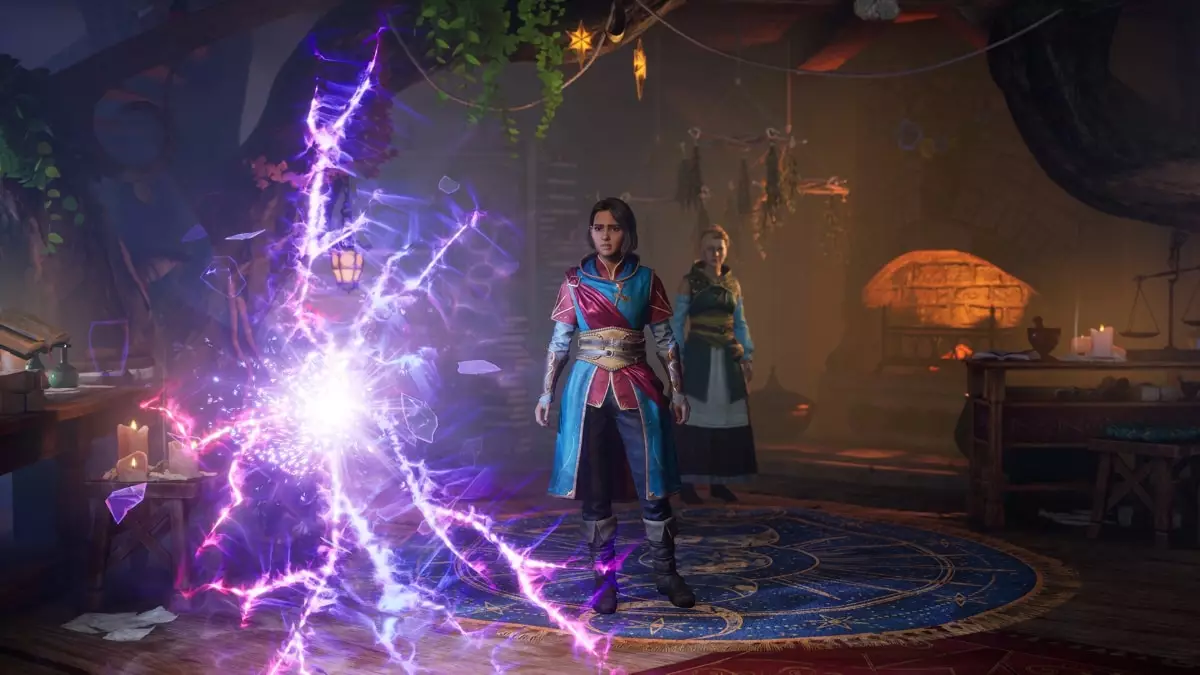The gaming landscape is perpetually evolving, yet the launch of the Nintendo Switch 2 and its accompanying features has sparked a dichotomy in perceptions and expectations. The announcement regarding EA’s forthcoming game, Split Fiction, has illuminated a glaring inconsistency: the much-touted GameShare feature is not merely a nod to convenience but rather a symbol of Nintendo’s perplexing business model. How can a feature promise to connect players across different consoles while simultaneously raising questions about accessibility? The GameShare feature adds depth to couch co-op gaming, yet it stands as a stark reminder of the limitations that gamers continue to face in the Nintendo ecosystem.
GameShare: A Double-Edged Sword
The GameShare functionality, which enables owners of the Switch 2 to share a game locally with a player on the original Switch, feels innovative on the surface. However, deeper scrutiny reveals a potentially patronizing tone beneath Nintendo’s offerings. While it’s commendable that players can forge connections across hardware generations, should we not challenge the idea that owning the latest console is a prerequisite for full gaming enjoyment? Players who invested in the original Switch may experience feelings of exclusion if game compatibility and sharing options are restricted to a narrow spectrum.
The excitement brewing around the launch of Split Fiction is undoubtedly palpable; a co-op game that enables collaborative play amongst friends is always welcome. Yet, the ambiguity surrounding which titles will benefit from GameShare leaves consumers questioning Nintendo’s transparency. Are they truly committed to fostering community among gamers, or is this a veiled attempt to nudge players toward purchasing hardware upgrades?
Marketing Beyond Clarity
EA’s announcement that Split Fiction will allow GameShare across both consoles but won’t be available on the original Switch can’t help but denote a disparity in branding and clarity. If a game isn’t launched for the original Switch, how effective is the promise of shared experiences?
Furthermore, Nintendo’s own website states that only games compatible with the Switch 1 can be shared through the Switch 2. This contradiction raises a plethora of questions regarding the validity of the GameShare feature. Will gamers who own multiple consoles endlessly navigate the convoluted channels dictated by hardware limitations and corporate agendas? Or will they be left out in the cold – forced to condone a fractured gaming community reliant on constant updates and new models?
The Illusion of Inclusion
It’s undeniable that features like the Friend’s Pass and cross-play serve to enhance the gaming experience, but they might also serve as shiny distractions from more troublesome truths. The notion that players can connect across multiple platforms is revolutionary, yet this innovation does not eradicate the bitter pill of affordability. The economic strain involved in keeping up with console generations cannot be overlooked. As the industry pushes for more robust gaming experiences, we must ask ourselves: who gets left behind?
In the midst of all this, it’s important to recognize that beneath the glamorous marketing lies a harsh reality – not everyone can afford to make the leap to the latest gear. In a climate that already sees an economic divide in technology access, it is disheartening to think that Nintendo might be tacitly endorsing the idea that the ‘haves’ and ‘have-nots’ in gaming continue to widen.
What’s Next for Nintendo’s Strategy?
As the March pre-order date looms and the release date of June 5 approaches, it’s crucial for Nintendo and its partners, including EA, to reevaluate their strategies. Rather than simply announcing new features and principles, they must openly address the challenges of accessibility that gamers encounter. It is time to abandon the notion that players must conform to hardware upgrades for a fuller experience.
In an era marked by advancements in inclusivity, Nintendo’s ongoing struggle to balance innovation with accessibility demonstrated through the GameShare feature raises further questions. Are we moving forward to a more connected gaming world, or are we simply charting a course toward yet another tiered gaming experience? Only time will tell, but it’s essential that these conversations are sparked and sustained, compelling both companies to recognize that inclusion must be at the forefront of their gaming vision.


Leave a Reply